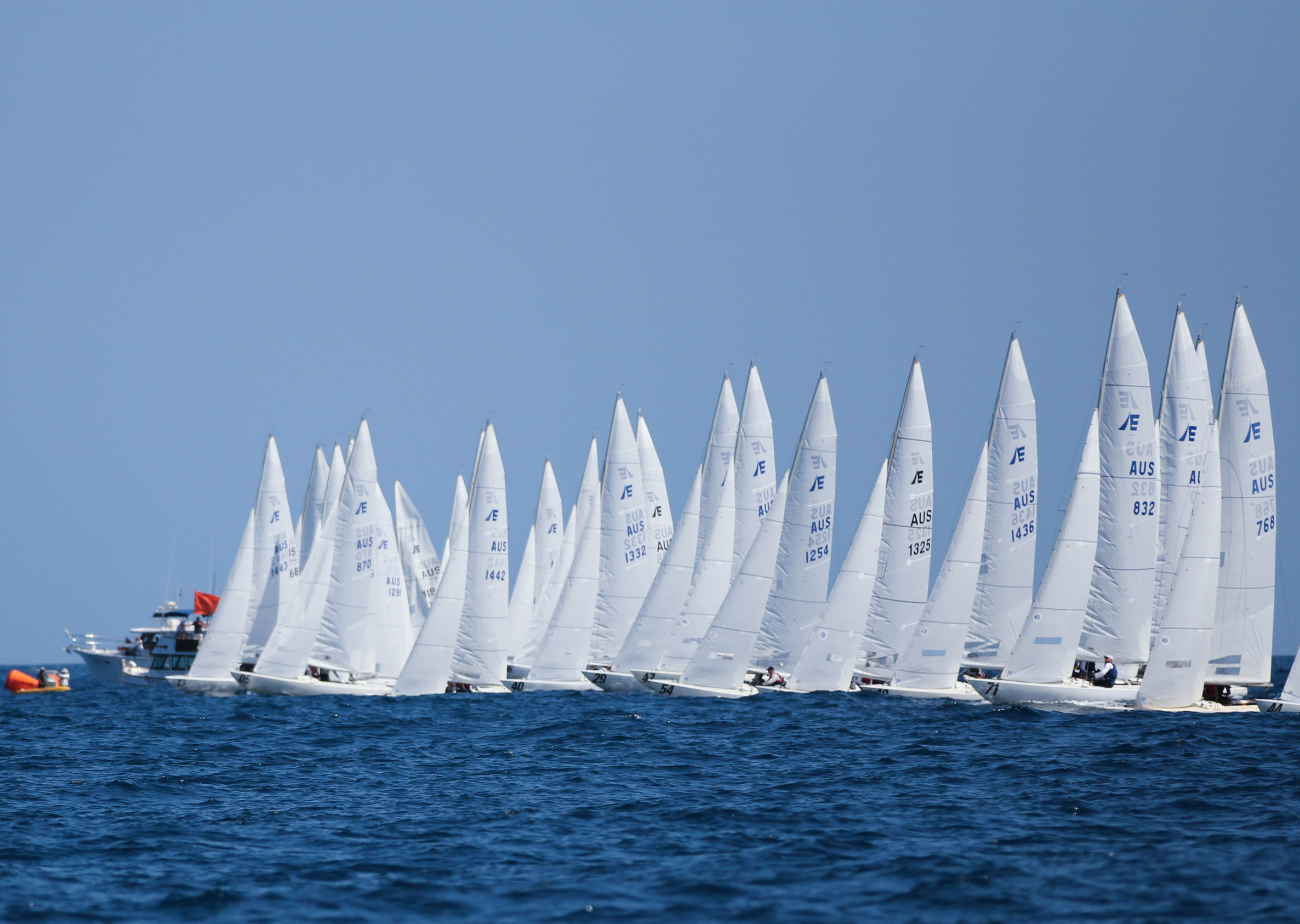

Following are excerpts from an interview I did with Glenn Bourke regarding Racing In A Large Fleet.
Glenn is an Olympian, an Americas Cup crew, an Ocean racer and a multiple world champion in several classes.
He is known for his attention to detail and meticulous approach to preparation and then execution out on the racetrack.
Brett: Approaching a weather mark, or a leeward mark for that matter, how far out do you plan the next leg. Is there something you’re thinking about while you’re on the run for instance?
GLENN: My first thing is to get yourself clear. If you’re coming down the run, get yourself clear, get yourself on the favoured side.
Look for where the pressure is coming from. Try to be on that side of it compared to the other guys in the fleet. Understand what you’re trying to do.
As you’re halfway down, it’ll depend on whether it’s a very homogenous breeze day, where it’s just oscillating nicely or whether it’s shifting back and forward, and there’s puff or whatever.
If it’s a day where there’s lots of change,
lots of shifts happening, lots of gusts happening, you probably don’t want to make your decision until you’re right down near the bottom somewhere.
So that you know, particularly if there’s a gate at the bottom, am I going to go left or am I going to go right?
Which way is the pressure and which way is headed on the run, so which side is the lifted side on the next beat? And where should I go?
If it’s a homogenous day, you know where the oscillations are. You know where you are in the fleet.
If you’re behind,
you’re looking for an opportunity so you might go to a different mark to the guys in front of you just to get clear air and get back in the race.
You might follow them because it’s so biased to one side that you just have to do that anyway.
You might have decided halfway down the run that the favoured side is the right or the left.
My predominant reaction is to go that way even if I’ve got to follow guys, get myself clear, tack off, get clear air, come back again, stay to the right. And those things evolve as you’re going down the run.
Because Mother Nature will throw so many different scenarios at you, you need to be thinking about it all the time. You can’t go and lock in and say, “I’m definitely going to the right-hand side,” if the factors that are affecting you are changing, over time.
So staying alert, staying adaptable, having a general plan, and then refining it as you get towards the bottom mark would be my advice.
BRETT: If you get caught approaching the weather mark on Port tack, and there’s a wall of starboard tackers, what is the best way to get out of that situation?
GLENN: I think you have to think about it earlier than that and one of the things which a lot of people do, which is hugely problematic, is that they run down the line.
They caught on port, and they run down the line. They’re basically running downwind down the line to get there. And then when you turn behind somebody, you need a huge hole to be able to get into it or get through it to get back onto starboard.
It’s like a massive turn. So the better thing is to get deeper and be able to put your bow up so you can tack into a much smaller hole and survive to the top mark.
That’s the thing that essentially pulls rigs out of boats is when they’re running down the line, they put their bow in there, they hook it on the back stay and pull the other guy’s rig out or something like that.
So get a bit deeper, get ready to do a much shallower tack rather than the great big huge turn in a boat like an Etchells which absolutely parks when you’re turning through 120 degrees or 140 degrees or something.
BRETT: There are times to take risks and times to be conservative, it depends on what’s at stake, doesn’t it?
GLENN: It does. The guys who, you know the guys in the fleet who are the risk takers they usually don’t win the regatta.
They’re usually starting at the pin, banging out to the left, and getting trapped out by, in your case, a hundred boats that cross their bow and tack on top of them on the way back to the top mark.
They’ll win two races in the series and they’ll come eighth in the regatta. They got heaps of pace, and they’re far too dramatic for sailboat racing and winning regattas. And that’s just the function of their nature. Most of them can’t change themselves.
To be at the top end of the fleet consistently, you have to be able to be conservative generally but adapt whenever opportunities or issues arise for you.
FREE BOOK – TIPS and STRATEGIES
BRETT: That leads me to another question I had here. When is it prudent to stay with the fleet?
GLENN: Always, when you’re constructing a regatta win, it’s safer to stay with the fleet.
I would prefer to have a third with no risk than a first with a medium amount of risk.
If I’m constructing a regatta, I’m trying to get on the podium every day? Can I get a decent result every day?
I know that the more I hang it out there and do dramatic things, the greater the risk. So if the fleet splits in two, and half go left and half go right, you got to take a punt on which side you think is correct.
If the fleet is predominately going right, and three guys go left, don’t worry about the left guys. Stay with the fleet because you know at worst you’re going to get into fourth place, and you can count that, and you are all happy and your main players are on your side of the course.
So again, it’s an accounting function where you just trying to work out risk versus reward all the time.
If you’re fast, there’s even more reason to stay with the fleet and I know that Tom Slingsby in his day, was a fast laser sailor and he would know when to just stick with them because he was going to make small gains if he stuck with them.
He might have had the opportunity of a huge gain when he went a different way, but why do that when you can stick with them and beat them anyway?
